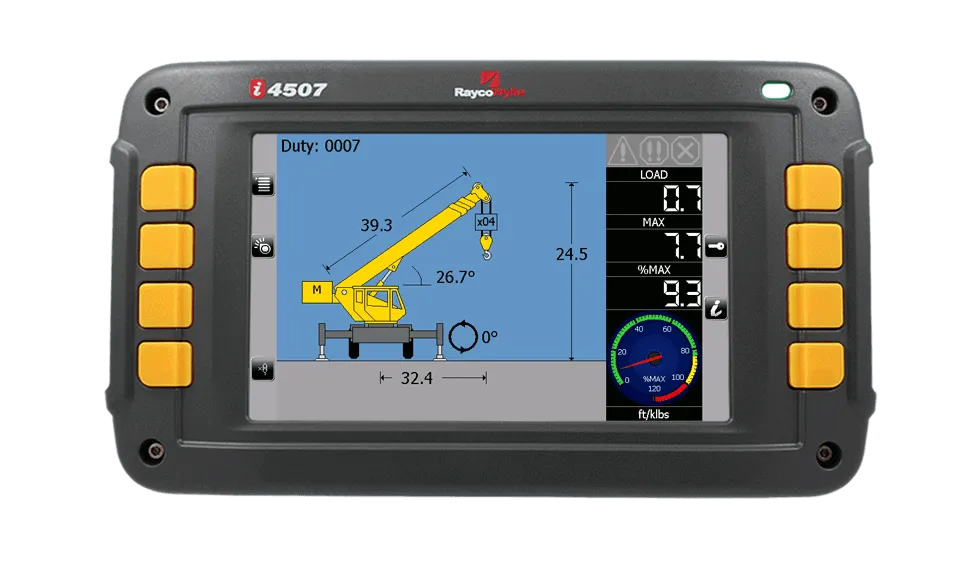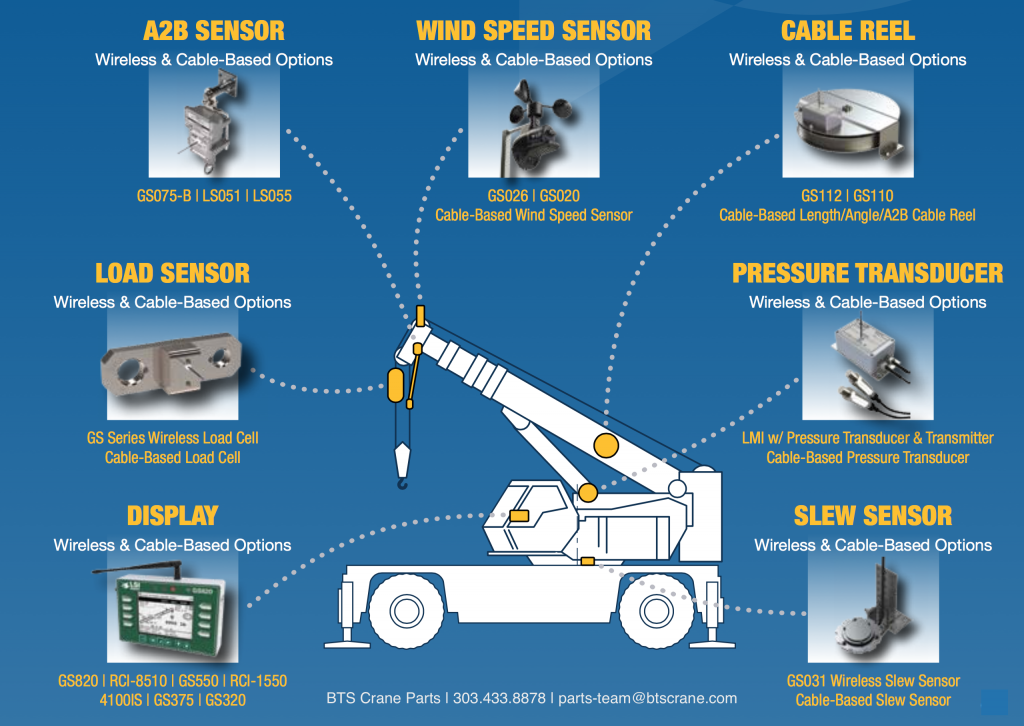









Boom Angle Indicators
A boom angle indicator is a crucial component on a marine crane designed to provide the operator with real-time information about the angle of the crane’s boom. This indicator helps ensure safe and precise lifting operations by allowing the operator to monitor and control the angle of the boom. Here’s a brief description of the boom angle indicator on a marine crane:
- Purpose: The primary purpose of the boom angle indicator is to provide the crane operator with accurate and immediate feedback on the angle of the crane’s boom. This information is essential for maintaining stability, preventing overloading, and ensuring safe lifting operations.
- Location: The boom angle indicator is typically located in the crane operator’s cabin or control station, within the operator’s line of sight. It may be integrated into the crane’s control panel or displayed separately on a dedicated screen.
- Measurement Method: Boom angle indicators use various methods to measure the angle of the crane’s boom. Common technologies include inclinometers, potentiometers, or sensors that detect the angular displacement of the boom.
- Display: The indicator displays the current angle of the boom in degrees or as a percentage. The display is clear and easily readable, allowing the operator to quickly assess the boom angle during lifting operations.
- Real-Time Monitoring: The boom angle indicator provides real-time feedback, allowing the operator to continuously monitor changes in the boom angle as the crane moves or lifts loads. This enables the operator to make immediate adjustments for safe and efficient operation.
- Visual Alerts: Many boom angle indicators incorporate visual alerts, such as color-coded displays or warning lights, to draw the operator’s attention if the boom approaches or exceeds a predefined safe angle. This helps prevent unsafe conditions and overloading.
- Integration with Crane Control System: The boom angle indicator is typically integrated into the crane’s overall control system. This integration allows for seamless communication with other safety features and control functions, contributing to coordinated and responsive crane operation.
- Calibration: Boom angle indicators are calibrated to ensure accuracy and reliability. Calibration is typically performed during crane setup or as part of routine maintenance to maintain precision in angle measurements.
- Environmental Resistance: Given the marine environment’s harsh conditions, boom angle indicators are designed to be resistant to water, corrosion, and other environmental factors. This ensures the durability and longevity of the indicator in maritime settings.
- Operator Training: Boom angle indicators are user-friendly and are often part of the operator training process. Operators are trained to interpret the boom angle information accurately and use it to make informed decisions during crane operations.
In summary, the boom angle indicator on a marine crane is a vital safety feature that enables the operator to monitor and control the angle of the crane’s boom during lifting operations. It plays a crucial role in preventing overloading, ensuring stability, and enhancing the overall safety and efficiency of marine crane operations.











Reviews
There are no reviews yet.